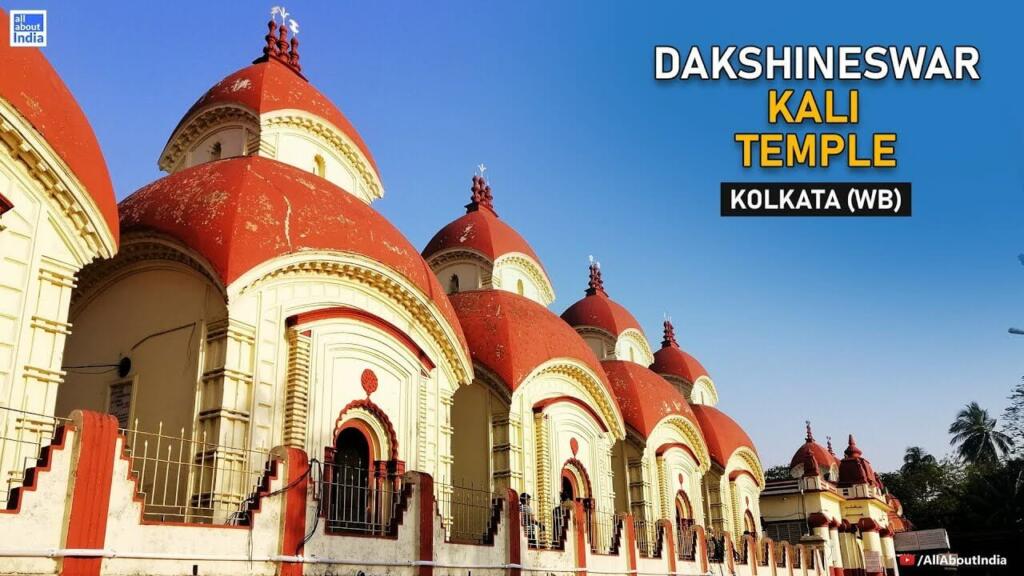Dakshineswar Kali Temple Kolkata – Guide
The Dakshineswar Kali Temple, located on the banks of the Hooghly River in Kolkata, is one of the most famous temples not only in Kolkata, but in the whole of Eastern India. The temple was established in 1855 by Rani Rashmoni, who was a philanthropist and a devotee of Goddess Kali. It is dedicated to the famous Goddess Bhadrarini, who is a form of Goddess Kali. The 19th century mystic sage and reformer Ramakrishna Paramahansa and his wife Sarada Devi were associated with this temple for a major part of their lives.
History of this Temple
According to the history of Dakshineswar Kali Temple, this is the famous temple of Kolkata and the construction of this magnificent temple started in the year 1847, which took 7 years to build, which was completed in 1855. This temple has been an important part of the history of West Bengal. While the name of the mystic sage and reformer Ramakrishna Paramhansa and his wife Sarada Devi is also associated with the spiritual history of this temple.
Kalpataru is one of the holiest festivals celebrated at the Dakshineswar Kali Temple. In this festival followers of Sri Ramkrishna attend this festival with much enthusiasm. This festival is celebrated on 1st January every year. Along with this Navratri, Dusshera and Diwali is also celebrated in this temple.
Dakshineswar Kali Temple Kolkata Timings
Dakshineswar Kali Temple Kolkata opens for devotees from 6.00 am to 12.30 pm and from 3.00 pm to 8.30 pm, you can visit Dakshineswar Kali Temple anytime during this time. Morning aarti is performed at 7:00 AM in the morning and evening aarti is performed at 7:30 PM in the evening.
| Saturday | 06:00 AM to 12:30 PM, 03:00 PM to 08:30 PM, Aarti: 07:00 AM & 07:30 PM |
| Sunday | 06:00 AM to 12:30 PM, 03:00 PM to 08:30 PM, Aarti: 07:00 AM & 07:30 PM |
| Monday | 06:00 AM to 12:30 PM, 03:00 PM to 08:30 PM, Aarti: 07:00 AM & 07:30 PM |
| Tuesday | 06:00 AM to 12:30 PM, 03:00 PM to 08:30 PM, Aarti: 07:00 AM & 07:30 PM |
| Wednesday | 06:00 AM to 12:30 PM, 03:00 PM to 08:30 PM, Aarti: 07:00 AM & 07:30 PM |
| Thursday | 06:00 AM to 12:30 PM, 03:00 PM to 08:30 PM, Aarti: 07:00 AM & 07:30 PM |
| Friday | 06:00 AM to 12:30 PM, 03:00 PM to 08:30 PM, Aarti: 07:00 AM & 07:30 PM |
Nat Mandir
The Nat Mandir is the main temple of the Dakshineswar Kali Temple. This temple is located inside the premises of Dakshineswar Kali Temple.
Ghazi Tal
Ghazi Taal is located to the northeast of the tank located in the Dakshineswar Kali temple complex. This is the same place where Sri Ramakrishna discovered Islam.
Kuthi Bari
Kuthi bari Originally built by Lord Hastings, Kuthi Bari is a major attraction of this temple complex which is located on the north side of the Ganges very close to Ghazi Tal.
Vishnu Temple
It is located in the north east of the temple complex which is known as Vishnu Temple or Radha Kanta Temple. The idol of Lord Krishna and Radha ji sits on a silver throne in this temple.
Bakul Tal Ghat
Bakul Tal Ghat, located at some distance from Nahabat Khan, is a famous Ghat where Shri Sharda Maa used to take bath in ancient times.
How to reach Dakshineswar Kali Temple Kolkata
By Air- The nearest airport from Dakshineswar Kali Temple Kolkata is Netaji Subhash Chandra Bose airport which is at a distance of 20 km from this temple. From here you can easily reach this temple by using local transport services or taxi.
By Train- The nearest railway station from Dakshineswar Kali Temple Kolkata is Howrah junction railway station. From here you can easily reach this temple by using local transport services or taxi.
By Road- Kolkata is well connected by road to all major cities of West Bengal as well as India. Regular bus services are also available to Kolkata from almost any part of India. And also roads to this temple are well connected with the other cities of the country so you can easily reach this temple by using your own vehicle.
Subscribe our TFI Dharma YouTube channel to watch Devotional videos because we are here to serve Sanatana Dhrama: TFIDHARMA
